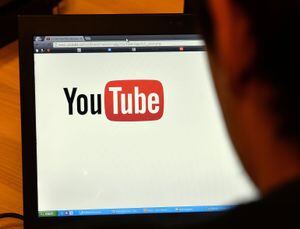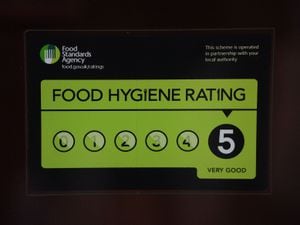The phenomenon of YouTube: How a day at the zoo transformed the media
It probably seems incredible to many Millennials, but there was a time, not that long ago, when people would walk past a television rental shop and stare in disbelief at the sight of their own faces on the small screen.

And when making your own video involved buying – or hiring – a very expensive camera, recording it on tape, and then copying it onto seven-inch cassettes if you wanted to share it with anybody.
Today, everyone's a broadcaster. At the drop of a hat teenagers will make short films for next-to-no cost, which are then viewed by millions within minutes of being recorded. And that is, in no small part, down to YouTube.
It is 15 years today since Jawed Karim, a young computer scientist, posted the first video on YouTube, an 18-second clip of the elephant enclosure at San Diego Zoo.
"All right, so here we are in front of the, uh, elephants, and the cool thing about these guys is that, is that they have really, really, really long, um, trunks, and that's, that's cool, and that's pretty much all there is to say," was the transcript of his video, imaginatively entitled 'Me at the Zoo'.
But while it may not have been an especially articulate or informative broadcast, its impact would be profound. Not only did it send shockwaves through the broadcasting industry, it also changed the world's relationship with the media, not to mention making Karim and his two friends into multi-millionaires.
Karim, now 41, was working at US internet giant PayPal with YouTube co-founders Chad Hurley and Steve Chen, when they spotted a gap in the market for a platform where people could share their home-made videos.
Karim says it was Janet Jackson's infamous 'wardrobe malfunction' at the 2004 Super Bowl which first gave him the idea for the site, as well as the 2004 Indian Ocean tsunami. He says he struggled to find video footage of either incident when he searched online, convincing him there was a need for a one-stop-shop where videos could be shared online.
Hurley and Chen say the original idea for YouTube was to create a video dating service, but a lack of people coming forward with dating videos caused a rethink. Another story, which Karim disputes, is that Hurley and Chen had made a video of a dinner party at Chen's flat, but couldn't find a way to share it with their friends.
Whatever the true story behind the idea – and it is possible it could be a bit of all of them – what is beyond doubt is that these three twenty-somethings had stumbled on idea that would have the biggest impact on broadcasting since the invention of television.
Like most success stories, there was a degree of luck in the timing of YouTube's launch, which coincided with the emergence of the early smartphones with internet connectivity and built-in cameras.
Within 19 months of the first broadcast of "Me at the Zoo", Hurley, Chen and Karim had sold YouTube to Google for $1.65 billion, although they could be forgiven for wondering about what might have been had they held onto it.
Today, YouTube is the second most used website in the world, beaten only by its owner, Google. Approximately 500 hours of video are uploaded to the platform every minute, while one billion hours of content are viewed every day. While most of this comes from amateur contributors simply wanting their video clips to reach a wider audience, some contributors, such as Zoe Sugg – better known to the 12 million subscribers to her fashion and beauty videos as Zoella – have become millionaires.
One of the most incredible success stories is that of eight-year-old Ryan Kaji. The youngster, from Texas, posts a daily video on the website reviewing the latest toys, and so far his broadcasts have been viewed an 37.4 billion times. More to the point, he topped the December 2019 Forbes 'rich list' of millionaire YouTube stars, earning 26 million US dollars. It was the second year he topped the list, with his earnings rising from 22 million dollars in 2018. One wonders what he says to his teachers when they ask him what he wants to do when he grows up.
Commentaries on video games also seem to be big business: Swedish gamer Felix Kjellberg, known to his fans as PewDiePie, and American Mark Fischbach, who styles himself as Markiplier, each made 13 million dollars last year for their analysis of the latest games.
And it seems there is no such thing as bad publicity where YouTube is concerned. In February 2011, 13-year-old Rebecca Black uploaded a music video of herself performing an excruciating song called Friday, which her mother had paid 4,000 dollars to have written and produced by the Ark record label. The song, whose lyrics discussed the burning issues of eating cereal before going to school and deciding which car seat to sit in, attracted a modest 1,000 views. But on March 11 it went viral, attracting millions of hits as the American public debated whether or not it was the worst record of all time. Despite the negative reaction, the resulting publicity helped the song reach No. 58 in the US Billboard Hot 100, and No. 61 in the UK singles charts.
Some commentators have even predicted that YouTube could lead to the eventual demise of conventional television broadcasting. A 2017 survey of teenagers' viewing habits found that they spent 34 per cent of their 'video time' watching, compared to just 14 per cent watching TV.
While reports of television's death may have been exaggerated, the ad hoc nature of YouTube has certainly changed people's expectations of the viewing experience. Today's online viewers can watch almost anything, from a repeat of The Likely Lads to Ryan's latest toy review, where they want and when they want. To today's young people, the idea of the family sitting round the television to watch a specific programme at a specific time seems just as quaint as waving at the camera in the window of Radio Rentals.





